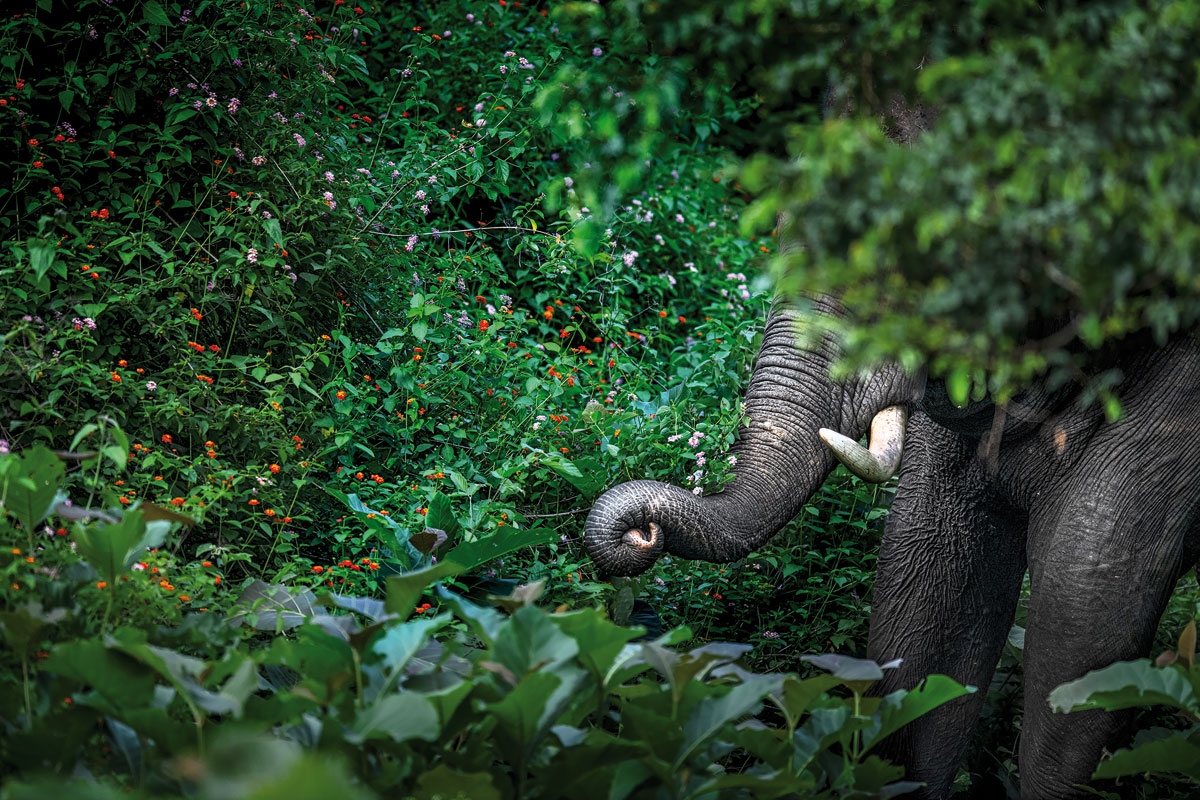The Elephant In The Room: Commentary
First published in Sanctuary Asia,
Vol. 43
No. 10,
October 2023
Bittu Sahgal, Editor, Sanctuary Asia
That gleaming white incisor you see on this page used to be a life saver for elephants. But in recent centuries, it has turned into a death sentence for the much-loved, much-worshiped pachyderm. Mercifully, a crackdown on poaching gangs in India has ivory poachers in temporary retreat, but hold the elephantine celebrations. India has found new ways of triggering elephant deaths that threaten to dwarf the impact of even the most prolific poachers.
One such is graphically depicted by those red, unpalatable blooms you see next to the elephant combing its once-rich forest home in Kabini, Karnataka for familiar foods. Toxic to humans and most animals including elephants, this South American import was introduced by the British as an ornamental plant in the 1800s. In the decades that followed, ill-informed land use policies by colonisers promoted over-grazing by cattle, monoculture plantations, and, post-Independence, the unfettered use of fossil fuels and industrial scale deforestation that led to soil death and climate-triggered, forest fires helped Lantana camara to run amok. The plant now dominates many of India’s poorly-funded wildlife sanctuaries and parks.
And that’s not the end of it.
Along with the sun-tolerant Lantana camara, India has been invaded by water hyacinth Eichhornia crassipes, mesquite Prosopis juliflora (gando bawal or the mad tree in Kutchh), and parthenium Parthenium hysterophorus, a flowering aster gifted to India by the USA under its PL 480 programme. These, and a host of others, threaten to dominate something like 60 per cent of India’s wildernesses. And for these invaders, India’s unfortunate planet mismanagement has been a boon. Like Trojan Horses, alien plant species are edging out native vegetation, depriving wild animals including mammals, avians, fish, frogs, insects and even the soil microflora and fauna with which they co-evolved.

Photo: Subhash Nair/Sanctuary Photolibrary.
The writing is on the wall for India and all other nations… nature is asking us to kneel before it in worship. If we don’t, it will force us to kneel in subjugation.
This issue of Sanctuary Asia spotlights solutions to our climate crises, through the rewilding and the resurrection of carbon-sequestering natural forests, grasslands, wetlands, coasts, and corals. Yet the elders continue to overwrite Earth’s permanent survival infrastructures with short-lived economic infrastructures – dams, mines, highways, townships and commercial monocultures. The young know that the biosphere operates through homeostasis, and is self-repairing. What they cannot fathom is why their elders are behaving so irrationally.
India’s Rig Veda spoke of our dependence on nature a millennia ago. Never has Homo sapiens so desperately needed to unite in defence of our biosphere. Between Sanctuary’s covers, a host of solutions have been offered to tackle our self-inflicted climate woes, prime among them being the imperative of restoring natural ecosystems and the biodiversity from whence we and the elephant in the room sprang.
Why are we waiting?


